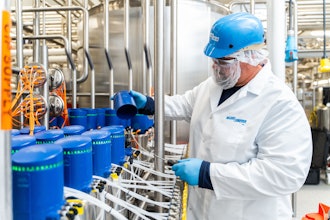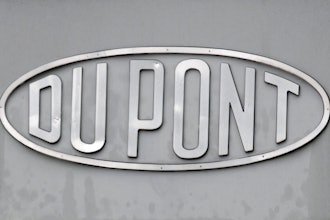
Through our on-site assessments, Nelson-Jameson has visited countless food manufacturing facilities to help start and optimize color-coding programs. However, implementing the program is only the beginning.
Color-coding is an important tool in preventing cross-contamination boosting a food manufacturing facility’s efficiency, while ultimately helping protect the food supply. And as we assist in building the programs, there is ongoing dialogue working with food processors to ensure that their color-coding is not a "set it and forget it" program. It requires a holistic approach with top-down buy-in, with ongoing reviews and evolution to adapt to changing facilities, workflows, and regulations, and to combat everyday threats. Here are some of the common (internal and external) threats that can undermine a color-coding program:
Poor communication or program compliance
A lack of ongoing program training
Pathogens, allergens, and foreign bodies
Inadequate tool quality
Lack of color contrast in tools
Improper tool storage
Why an Ongoing, Iterative Approach is Essential
Color coding is dynamic, and like the tools within the program, the program itself requires maintenance. From replacing broken-down items to adapting to external changes, color-coding requires ongoing upkeep.
The simplest challenge commonly faced is that tools break and need replacing. It's crucial to replace them with the correct color and type to maintain the system's integrity and prevent foreign body risks, especially given that high-quality, durable tools reduce how often they need replacing.
There’s also the fact that facilities can change and expand, which frequently shifts workflows and zones and requires accommodation by the program. But much more commonly for facilities is for team members to come and go. Whether its supervisors or boots-on-the-ground employees leaving the organization – or joining from other departments – ongoing communication is important to keep current employees up-to-date and to inform new workers.
But it’s more than internal threats like inadequate tools or communication issues. External food safety threats and regulations also continuously evolve with time, requiring ongoing adaptation to maintain compliance. For example, the Food Safety Modernization Act (FSMA) has significantly shifted the landscape, emphasizing preventative controls like color-coding, making it an essential component for preventing cross-contamination and a program that regulatory bodies now expect to see as fundamental to a food safety plan. Additionally, pathogens evolve, and new materials in packaging and processing or more complex machinery can be introduced at any time, posing more physical external threats to the program and food safety.
The Simple ROI Calculus of color-coding
Now that we’ve shared threats, it’s easier to see how implementing color-coding offers ROI. While not always a mandatory regulation itself, it is invaluable in helping you meet regulatory compliance by fundamentally enhancing food safety and preventing cross-contamination. It directly impacts the bottom line by helping avoid costly recalls, which are financially burdensome and can cause damage to brand reputation. Thus, color-coding is a strategic investment in food safety, efficiency, and your business's future.
Key Indicators of an Effective Color-Coding Program
Protecting food safety and your brand are the goals of color-coding. But how do you know your program is effective? Here are some of the KPIs to measure success:
Adherence rate and storage compliance: Regular visual checks, documented observations, and audit findings.
Training completion rate: Aim for a 100% completion rate for all personnel interacting with color-coded items.
Tools out of place incidents: Documented observations during routine checks.
Tool replacement frequency: Consistent replacement can indicate high wear due to consistent and proper use, or conversely, could hint at tools being misused or the wrong tool used.
Cross-contamination or foreign body incidents: A direct measure of the effectiveness of color-coding in preventing allergen cross-contamination and foreign bodies.
By tracking KPIs and analyzing trends, food manufacturers can demonstrate the tangible benefits of a holistic and iterative color-coding program and ensure it protects food safety and scales with their brand.
Jenna Ponshock is the director of product management at Nelson-Jameson, a leading distributor in the food processing industry.























